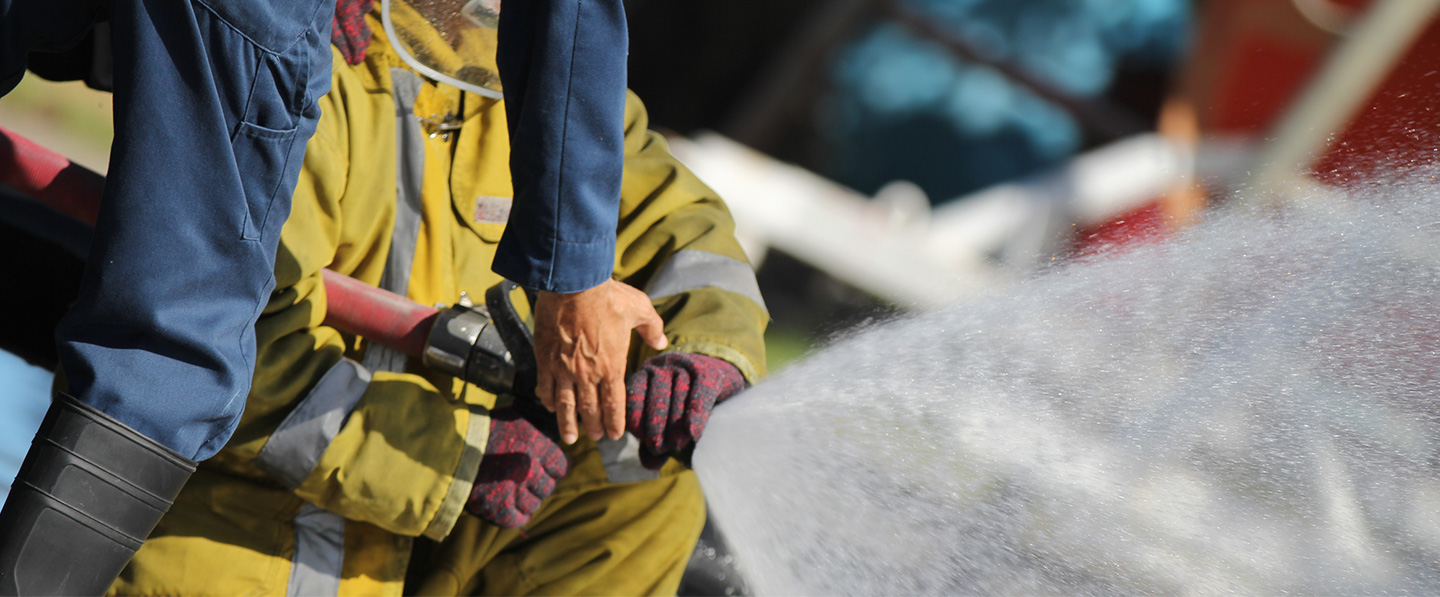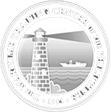
COURSES
Simulator Courses
| SCOPE |
This course is based on the requirements of Regulation II/4 of Chapter II, Section A-II, Table A-II/4, STCW-78 as amended in 1995 as mandatory requirements for Rating Forming Parts of Navigational Watch, navigation functions at the support level. |
||||||||||||
| OBJECTIVES |
On successful completion of the course and assessment/examination, trainee should be able to demonstrate competence in performing the navigational function at the support level as specified in column 1 and 2 of Table A-II/4 of the STCW Code. In addition, to encourage safety consciousness, trainees will have to acquir working knowledge, understanding and proficiency as well as the demonstration of competence in watchkeeping, protection of the marine environment and safety of life at sea. |
||||||||||||
| ENTRY STANDARDS |
This course is principally intended to trainee who shall:
|
||||||||||||
| SCHEDULE |
|
||||||||||||
| SCOPE |
This course covers the training recommended in Chapter III, Regulation III/4, Chapter III, Section A-III/4 and Chapter III, Section B-III/4 STCW-78 Convention as amended in 1995. |
||||||||||||
| OBJECTIVES |
The trainees who successfully complete this course will be able to perform the duties, responsibilities and competency of a rating forming part of an engineering watch. |
||||||||||||
| ENTRY STANDARDS |
The entry standard for this course shall be as follows: The trainee shall:
|
||||||||||||
| SCHEDULE |
|
||||||||||||
| SCOPE | |||||||||||||
| OBJECTIVES | |||||||||||||
| ENTRY STANDARDS | |||||||||||||
| SCHEDULE |
|
||||||||||||
| SCOPE | This course provides training in the basic theory and use of radar for officers in charge of a navigational watch. It is based on the guidance on training in radar observation and plotting and in the operational use of ARPA in Section B-I/12 of the International Convention on standards of Training, Certification and Watchkeeping for Seafarers, 1978, as amended in 1995 (STCW 1995). This model course aims to meet the minimum training standards in Table A-II/1 of the STCW 1995. this guidance supersedes the recommendations annexed to resolutions A.482(XII) and A.483(XII) adopted by IMO in 1981.
This model course aims to meet the mandatory minimum requirements for knowledge, understanding and proficiency in Table A-II/1 of STCW 1995. the aspects covered include the theory necessary to understand how radar information is obtained and displayed, the limitations and accuracy of that information, the information and recognition of unwanted responses, the correct use of operational controls to obtain an optimal display and checks on performance of the set. The various modes of display available and the choice of a suitable mode for a particular application are covered, together with the effect that changes in the course or speed of “own” or target ship have on the appearance of the display. The course also covers the recognition of critical targets, the measurement of bearing and distances, and the use of these for fixing the ship’s position and maintaining a plot of the movement of other ships as a aid to collision avoidance. Exercises in the application of the International Regulation for Preventing Collisions at Sea (COLREG) make use of the resulting plots. |
||||||||||||
| OBJECTIVES |
A trainee successfully completing this course and meeting the required performance standards will recognize when radar should be in use; will select a suitable mode and range setting for the circumstances; will be able to set the controls for optimal performance; and will be aware of the limitations of the equipment in detecting targets and in terms of accuracy. When within range of the coast, the trainee will be able to compare the radar display with the chart, select suitable conspicuous land targets and use these targets to fix his position. The trainee will also be aware of the need to maintain a continuing plot of ship targets which may pose a potential threat of collision; and he will be able to derive from the plot the necessary information about other ship’s courses, speeds and nearest approaches to enable action to be taken in ample time, in accordance with COLREG to prevent a close-quarters situation arising. |
||||||||||||
| ENTRY STANDARDS |
This course is principally intended for candidates for certification as officers in charge of a navigational watch. Before entering the course, trainees should have completed a minimum period of six months at sea and preferably have gained some experience of bridge watchkeeping. |
||||||||||||
| SCHEDULE |
|
||||||||||||
| SCOPE |
The course is essentially practical and consists of a series of exercises performed on a radar simulator with two or more “own ships” and a number of others controlled by the instructor. Each exercises will involve observing the movement of ships seen on the radar, recognizing those presenting a threat of collision and taking action to avoid collisions , Trainees will act either as master or as an observing officer for the exercises and will change roles to allow each a turn in command of an “own ship”. As the course progresses, exercises of increasing complexity will be set to provide realistic practice in the use of radar for navigation and collision avoidance in confined waters with heavy traffic. Each exercise will be followed by class discussion, giving participants the opportunity to analyze the actions taken and discuss possible alternatives. |
||||||||||||
| OBJECTIVES |
Those successfully completing this course will be able to make efficient and effective use of radar as a navigational aid in congested, confined waters, recognize potential threats and make valid navigational and collision-avoidance decisions based on sound radar observation and plotting in compliance with the International Regulations for Preventing Collisions at Sea (COLREG) 1972. They will be aware of the time needed to appreciate that a dangerous situation is developing, to decide upon and take appropriate action, and to ascertain that such action is adequate and does not give rise to further conflicts with other vessels. They will also realize that excessive speed in poor visibility reduces the time available to assess a threat and to take appropriate action. |
||||||||||||
| ENTRY STANDARDS | The Course is open to all licensed Marine Deck officer and Major Patron, who have completed a training in Radar Navigation, Radar Plotting & the use of ARPA (IMO Model Course 1.07). The Room size is enough size to accommodate 15 Students & 3 students for each simulator | ||||||||||||
| SCHEDULE |
|
||||||||||||
| SCOPE | This course is intended to meet the mandatory minimum requirements specified in Table A-11/1, Table A-11/2 and Table A-11/3 of the STCW’95.The course is essentially practical and consist of a series of exercises performed on a radar / ARPA Simulator with two or more “ own ship and a number of others controlled by the instructor .
Each exercises will involved observing the movement of Ships seen on the radar, recognizing those presenting a threat of collision and taking action to avoid collisions. The methods by which the ARPA requires targets, track then and derives information on their movements will be covered in sufficient depth to allow an appreciation of the limitation of detection and accuracy, and the dangers of over reliance on ARPA. Other aspects covered include the different types of ARPA in use and their various displays the content of IMO Resolution A.823 (19), A.477 (XII) and A.422 (XI). The exercises will provide practice in the setting up the RADAR, the selection of operational alarms and ARPA facilities, and the use of these to derived information on other Ships, the movement, the ranges at closest points of approach (CPA), and the times to closest points of approach (TCPA), the recognition of potential threats, and the use of ARPA to determine the action to take to avoid close quarters situations in accordance with the International Regulations for Preventing Collisions at Sea (COLREG) and the subsequent monitoring of such action. The trainees will assume the different role of the Bridge Watchkeeping Team, the role being rotated to allow each trainee an opportunity to act as master for some of the exercises. Each exercise will be preceded by a session for briefing and planning and be followed by a group discussion led by the instructor to analyze the actions and decisions of the trainees. |
||||||||||||
| OBJECTIVES | The course has a high practical content, enabling the officer to evaluate navigational information derived from all sources, including radar and ARPA, in order to make and implement command decisions for collision avoidance and for directing the safe navigation of the ship.Trainees will extend the application of navigational and collision avoidance techniques studied and practiced at the operational (first certificate) level, including :
Simulation exercises will include :
Assessment is continual simulation, role-play and oral/written questioning. Successful candidate will receive an MCA approved certificate. |
||||||||||||
| ENTRY STANDARDS | The course is open to all licensed Marine Deck Officer who have completed a training in RADAR Navigation, RADAR Plotting and use of ARPA (IMO Model Course 1.07) | ||||||||||||
| SCHEDULE |
|
||||||||||||




